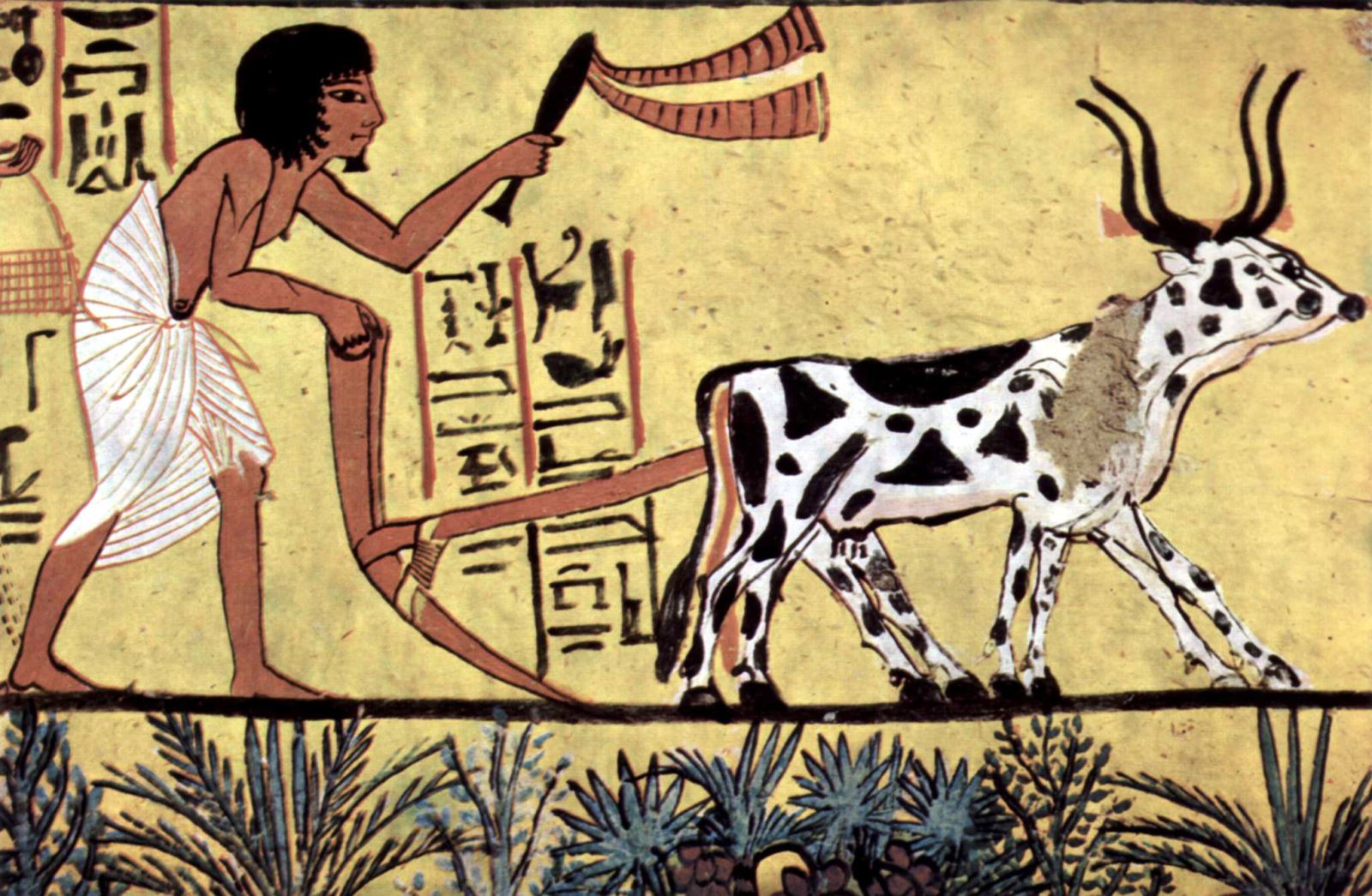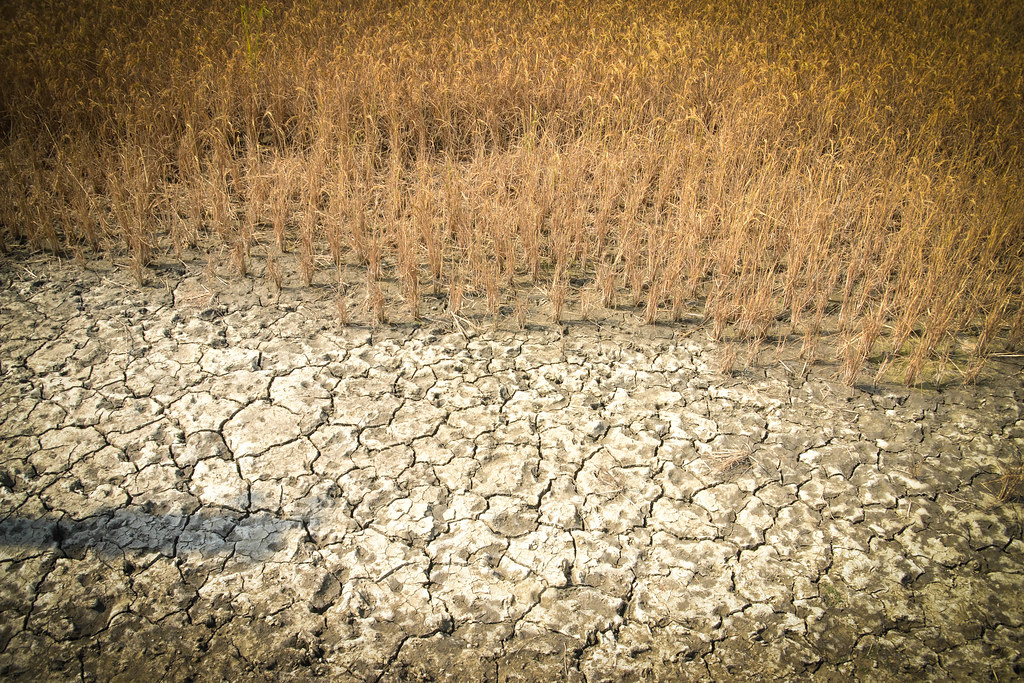As early as agriculture emerged about 12,000 years ago, changing human life from gathering and hunting to forming permanent settlements and allowing them to build civilizations, soil has established its status as a primary element of life on Earth, just like water.
Although modern technology has recently made soil-less food production possible, it is undeniable that, throughout time and place, mankind has primarily depended on soil for producing the great majority of food.

Ploughing fields in Ancient Egypt. Painting from Sennedjem tomb, 1200 BC. Image source: ar.wikipedia.org
Soil Types
Soils can be described as systems or bodies with diverse elements that together perform a certain function. Based on the texture, soils can be classified into three major types: sandy, loam, and clay soils. There are different requirements and procedures for farming each type of soil, as well as crops that best suit it.
Sandy soils are grainy with relatively large particles (2.00–0.5 mm), which makes it easy for water to flow down between, making the them drain very readily. Sandy soils retain few nutrients and are less fertile than other soil types. Clay soils are the opposite, with 30% of its composition made of tiny clay particles (less than 0.002 mm). Clay soil can store nutrients for much longer, has high water retention, and is much more resistant to droughts and extreme temperatures. However, its heavy compact texture makes it difficult to work with and hard for the air, water, and nutrients penetrate it.
Loam soils are a combination of sandy, clay, and silt (0.5 to 0.002 mm) particles. It is considered the ideal type of soil as it combines the advantages and avoids the disadvantages of other soil types. The clay and silt particles preserve moisture while the sand decreases compaction, and improves drainage.

Type of Soils. Image source: gardenerdy.com
Soil Composition
A typical soil is made of five ingredients, namely minerals, organic matter, living organisms, gas, and water. Soil minerals include iron, potassium, magnesium, calcium, sulphur, among others. Organic matter refers to residues of decomposing plant, animal, and microbes, known as humus. Living organisms include bacteria, fungi, nematodes, earth worm, beetles, and moles. These creatures enhance soil structure and aeration as well as water infiltration.
It is worth mentioning that the percentage of beneficial organism and humus in the soil is very significant in indicating its quality and fertility. According to the Encyclopedia Britannica, one square meter of rich soil can carry up to 1 billion organisms.
If not filled with water, soil pores are filled with air. According to Landcare Research, soil gas is a mixture of 79% nitrogen, less than 20.6% oxygen, and more than 0.2% carbon dioxide. These gases are in constant exchange with the atmosphere.
Challenges
Just like all our other precious resources, soils are facing serious challenges around the world. These include soil erosion, salination, contamination, acidification, among others. Now, let us briefly explain two of these threats.
Erosion is losing the upper layer of soil—also known as topsoil—through water, wind, ploughing, etc. This layer is the richest with nutrients and, hence, is the most fertile. Soil erosion is happening all around the globe, and will reduce up to 10% of global crop yields by 2050.
Soil salination refers to the high concentration of soluble salts in the soil. Salination is more evident in arid areas that witness high evaporation rates and insufficient rainfall to make for the lost water. It is worth mentioning that salinity is a major problem in the Nile delta agricultural lands due to seawater intrusion, unsuitable irrigation management, and inadequate drainage conditions. To deal with such a huge challenge and threat to our food security, in addition to addressing the unsustainable farming practices, farmers need to adopt saline agriculture practices and farming salination-tolerant crops.

Soil salination. Image source: flickr.com
References
britannica.com
fao.org
holganix.com (1)
holganix.com (2)
nagwa.com
nature.com
nesdis.noaa.gov
rhs.org.uk
saline-agriculture.com
soils.landcareresearch.co.nz
Cover image by vecstock on Freepik.